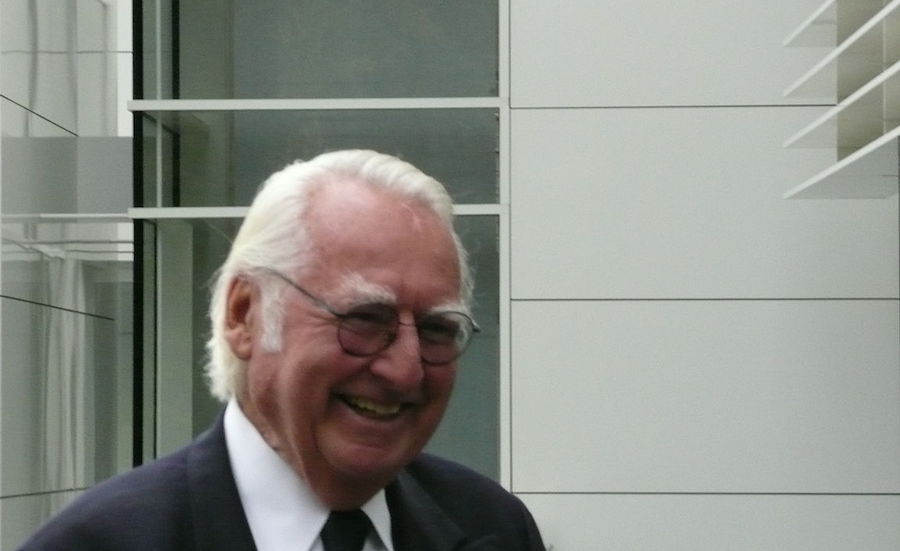The Pritzker Prize organization has told the New York Times that it doesn't delve into its laureates' personal lives even though it considers sexual harassment and abuse a serious matter. The organization has an opportunity now to reconsider and to accomplish as much as any award that honors excellence in architecture, even one so noble as the Pritzker Prize. It can follow the example set by numerous other organizations that present awards and honors and revoke the Pritzker Prize presented to architect Richard Meier in 1984. The American Institute of Architects ought to take a similar path with the Gold Medal it awarded Meier in 1997.
A good start for the The Hyatt Foundation, which created the Pritzker Architecture Prize in 1979, would be to conduct an investigation of Meier’s alleged offenses, first revealed by the New York Times. That investigation need not be as exhaustive as the one that recently led to the exit of conductor James Levine from his role as director of the Metropolitan Opera in New York City. The opera’s law firm, Proskauer & Rose, interviewed 70 people before showing its evidence to the opera’s directors. That kind of long, costly probe is more appropriate for an employer.
But one reason to do at least some due diligence is the lofty goals set for the Pritzker Prize itself as architecture’s Nobel and the profession’s highest honor.
Architecture is more important than anything Harvey Weinstein or Louis C.K. or Kevin Spacey or Charlie Rose worked on.
“It is granted annually and is often referred to as ‘architecture’s Nobel’ and ‘the profession’s highest honor,’” words taken straight from the Prize’s website. The $100,000 award is conferred on the laureate at a ceremony held at one of the world’s architecturally significant sites. A bronze medallion is struck for the winner.
Meier’s potential offenses are especially in need of investigating beyond the victims that were interviewed by the New York Times, which broke the news about Meier and Levine.
You could argue that Meier and Levine’s artistic achievements and contribution to their fields should be evaluated separately from their alleged abuse. Meier, now 83, has so many accomplishments to admire. Starting with the Atheneum in New Harmony, Indiana (1979), the High Museum of Art in Atlanta (1983), the Barcelona Museum of Contemporary Art (1995) and the Getty Center in Los Angeles (1997). And on and on.
So why deplete the pantheon of great architects over the way Meier has treated women in what so far are known to be a few ill-advised abuses, humiliations and harassment? Why should these lapses throw a shadow over a long career?
Well, the accomplishments will still stand for us to admire but awards honoring great work never exist outside the bounds of ethics and humanity.
Architecture occupies an especially important sphere, organizing human interactions, shaping the public experience and icons that define our society. Go down the list of human endeavor, to journalism, entertainment, philanthropy, and you can’t say they mean or speak to so many aspects of day-to-day life as much as architecture.
Yet architecture, like much of the rest of the construction industry, remains largely a man’s world. And just as the maestro orchestra conductor is exalted and exercises unique authority over musicians, a few key partners in charge of design also wield power over aspiring young architects and others. The profession—that’s what it is, after all, a profession requiring a state license—is better off without all the starchitect worship. Could such worship open the door to powerful men to cross the line to abuse? Turn architects into celebrities if you must, but when we elevate them to star and guru status we invite the entitlement that Meier now conveniently remembers only as misunderstandings.
Meier: 'Deeply Troubled and Embarassed'
Before taking a six-month leave-of-absence from his architectural firm, Meier wrote that he is “deeply troubled and embarrassed by the accounts of several women who were offended by my words and actions.” He added, “While our recollections may differ, I sincerely apologize to anyone who was offended by my behavior." That kind of answer just won't cut it, not after Harvey Weinstein.
Not when your own company website quotes you as saying that “openness and clarity are characteristics that represent American architecture at its best” and “architecture has the power to inspire, to elevate the spirit, to feed both the mind and the body. It is for me the most public of the arts.” That last comment is from what the Meier firm website says is his lifetime achievement speech in 2001.
From that it follows that architecture is more important than anything Harvey Weinstein or Louis C.K. or Kevin Spacey or Charlie Rose worked on.
The Meier reconsiderations have already begun. So far, Sotheby’s has closed down a Meier art exhibit early, and Cornell University, his alma mater, has rejected Meier’s offer of an endowment in architecture.
Should, after investigation, Meier be stripped of his honors, the message would be resoundingly clear about sexual harassment and manipulation in the architectural profession.
So, Pritzer award and Hyatt Foundation, conduct the due diligence and if the allegations are proven or if more abuse or harassment is found, take back Meier’s Pritzker Prize. Let Meier and others who feel similarly entitled understand that such offenses break a vital bond not only with society but with the world of architecture and construction.
The Pritzker Prize would mean even more every time it is presented thereafter.
This viewpoint commentary was revised March 16 to reflect new information about the Pritzker Prize organization's position on the allegations against architect Richard Meier. It was revised again March 21 to say that any investigation of Mr. Meier need not be as thorough as the the one conducted by the Metropolitan Opera in New York City.





Post a comment to this article
Report Abusive Comment